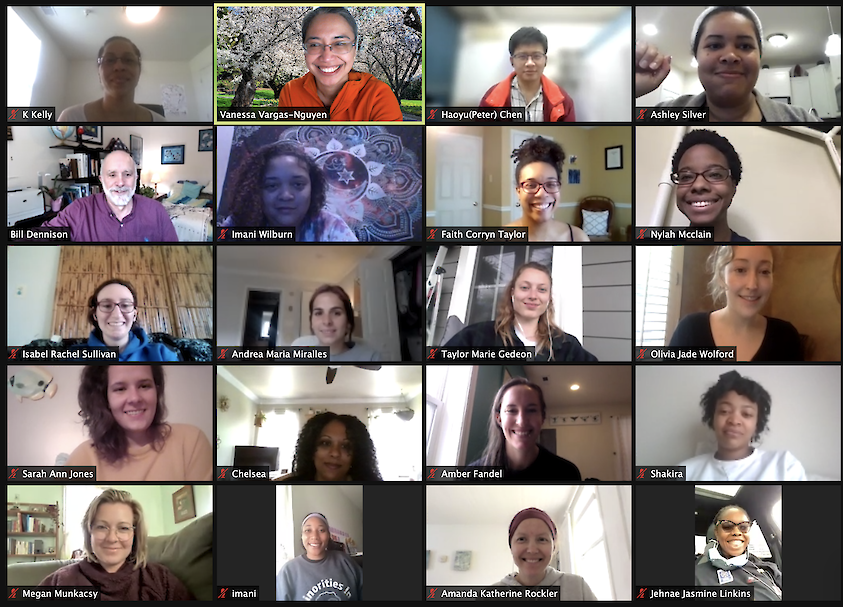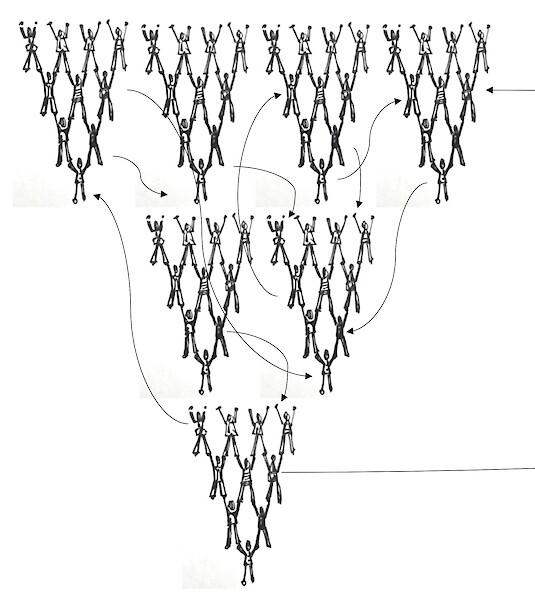The End is Here and the Beginning is Still to Come
Amanda Rockler ·The end of another semester is here. Congratulations to all of my smart and amazing classmates! I feel so fortunate to be heading into a future where creative and critical thinkers are applying science to make lasting social impacts.

The May 7th class was also the third and final stakeholder listening session of the semester and this week’s invited guests were Fred Tutman, the Patuxent Riverkeeper, Lauren Paulet and Bob Summers from Blue Water Baltimore, and Brooke Landry from Maryland DNR. Much of the conversation for this class revolved around how to best engage stakeholders in restoration efforts. As an on-the-ground, community-based practitioner, Fred Tutman had many valuable insights about how to work effectively with communities and facilitate transformative action. These include 1. listening to (rather than telling) what communities need, 2. empowering communities, 3. having deliberate community participation, 4. honoring the hearts and minds of the community members and not just their wallets, and 5. utilizing justice as a foundational principle. A part of the discussion that really resonated with me was when Fred asked, “Who owns the Bay restoration movement?”
Since 1983, the Chesapeake Bay Program (CBP) has been the driving entity behind Bay restoration, but is this organization the appropriate “owner” of Bay restoration or just an entity with the power, money, and influence? My classmate Faith Taylor accentuated this idea in her blog post when she wrote, “the members of the CBP acknowledge that they have underserved communities in the Chesapeake Bay area, but the development of a DEJI action plan that included little to no meaningful input from the communities that would be the beneficiaries of this plan is an oversight that cannot go unaddressed ”(Taylor, 2021). In order to shift more towards a flat/bottom up “ownership” approach the status quo must be dismantled, and, according to environmental justice (EJ) leaders Donald McEachin and Reverend Leo Woodberry, has to include:
Structural changes that put resources in the hands of communities hit hard by the effects of climate change and wounded by our existing, unjust energy system. Community-led solutions managed by local agencies, run by the people on the front lines—the people who know best how to heal their own communities, and how to forge a path to a more equitable future (McEachin, n.d.).


There is no denying that building an environmental justice report card is a difficult endeavor. Even though our class has laid the groundwork for an EJ report card, the work is far from done: defining indicators and thresholds, identifying existing data and data gaps, preparing a survey, and holding three initial stakeholder workshops. Geospatially layering natural science data with social science determinants can inform some aspects of an EJ report card, but it is only a start. Next year, another issue study group will pick up from where we have left off. A critical next step will be to engage with marginalized and vulnerable communities and incorporate their local knowledge and lived experiences into the EJ report card.
To build a justice movement requires agitation, a substantial investment in breaking down the entrenched racist structures and systems, and rebuilding. Listening and letting communities lead is a good place to start.
Here are a few resources I recently found that are interesting.
Please feel free to recommend any others that I missed in the comments section.
Ezeilo, A., & Chiles, N. (2020). Engage, connect, protect empowering diverse youth as environmental leaders. Gabriola Island, BC: New Society Publishers. Retrived from https://newsociety.com/books/e/engage-connect-protect
Okorafor, N. (2010). Who fears death. New York, NY: Daw Books. Retrived from https://www.penguinrandomhouse.com/books/306712/who-fears-death-by-nnedi-okorafor/9780756417109
Washington, H. A. (2020). A terrible thing to waste: environmental racism and its assault on the American mind. Boston, MA: Little, Brown and Company. Retrieved from https://www.littlebrown.com/titles/harriet-a-washington/a-terrible-thing-to-waste/9781478975755/
Erves, J. C., Mayo-Gamble, T. L., Malin-Fair, A., Boyer, A., Joosten, Y., Vaughn, Y. C., Sherden, L., Luther, P., Miller, S., & Wilkins, C. H. (2017). Needs, Priorities, and Recommendations for Engaging Underrepresented Populations in Clinical Research: A Community Perspective. Journal of community health, 42(3), 472–480. https://doi.org/10.1007/s10900-016-0279-2
Speights, J. S. B. , Nowakowski, A. C. H., De Leon, J., Mitchell, M. M. , Simpson, I. (2017). Engaging African American women in research: an approach to eliminate health disparities in the African American community. Family Practice, 34(3), 322-329. https://doi.org/10.1093/fampra/cmx026
Pandya, R.E. (2012). A framework for engaging diverse communities in citizen science in the US. Frontiers in Ecology and the Environment, 10, 314-317. https://doi.org/10.1890/120007
Taylor, D. (2018). Diversity in Environmental Organizations Reporting and Transparency. doi:10.13140/RG.2.2.24588.00649.
Dr. Robert Bullard, https://drrobertbullard.com/
National Black Environmental Justice Movement, https://www.nbejn.com/
References
McEachin, C. D. (n.d.). Coronavirus, Climate Change And How We Can Build A More Equitable America. Blavity News & Politics. Retrieved from https://blavity.com/climate-change-and-how-we-can-build-a-more-equitable-america?category1=opinion
Taylor, Faith. (2021, March 10). Why Now? A Critique of the Chesapeake Bay Program’s Diversity, Equity, Justice and Inclusion Action Plan. UMCES IAN Blog. Retrieved from https://ian.umces.edu/blog/why-now-a-critique-of-the-chesapeake-bay-programs-diversity-equity-justice-and-inclusion-action-plan/

